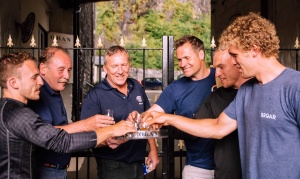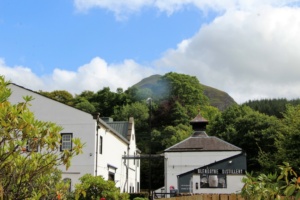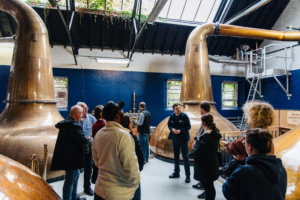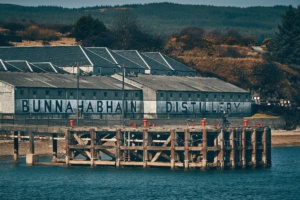Glenmorangie To Help Oyster Conservation
The Glenmorangie Company, together with its partners including Scottish Natural Heritage are hosting the meeting bringing together marine scientists conservationists, administrators and oyster producers from across Europe, with the aim of developing a ‘blueprint’ for native oyster reef restoration. At least 15 European countries will be involved in these efforts.
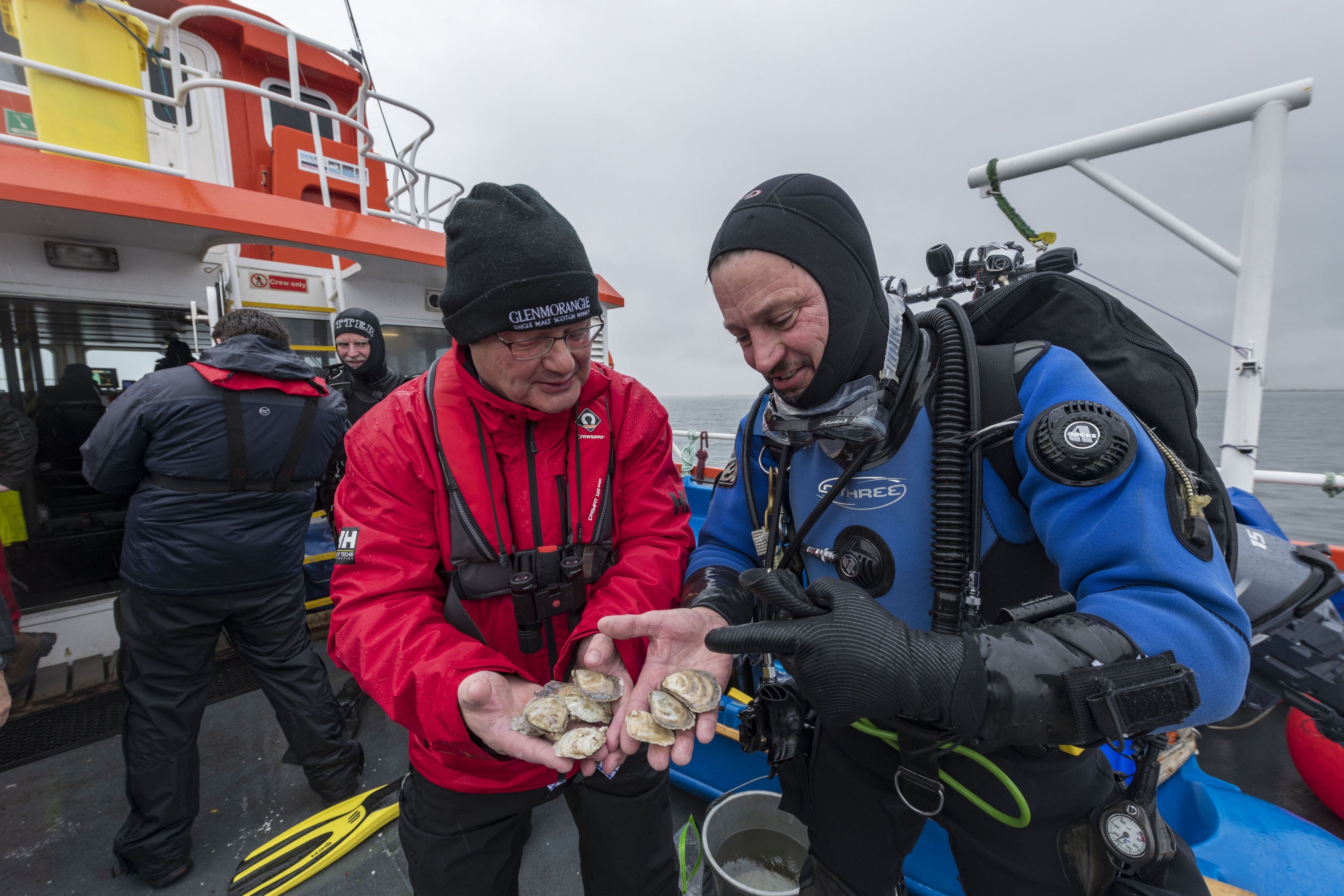 Glenmorangie’s Hamish Torrie and Dr Bill Sanderson of Heriot-Watt inspect the Native European Oysters before they take up residence in the Dornoch Firth
The Glenmorangie Company, together with its partners including Scottish Natural Heritage are hosting the meeting bringing together marine scientists conservationists, administrators and oyster producers from across Europe, with the aim of developing a ‘blueprint’ for native oyster reef restoration. At least 15 European countries will be involved in these efforts.
This will be the second Native Oyster Restoration Alliance (NORA) conference, first established in Berlin two years ago, and taking place in Edinburgh 21st – 23rd May 2019. Having been wiped out due to overfishing by as much as a century ago, the plans could see millions of native oysters (Ostrea edulis) returned to the seas around Sweden, France, Germany, England, Wales, Ireland, the Netherlands, Belgium, Italy and Croatia.
Glenmorangie have a proud Scottish Highland heritage and are dedicated to protecting its beautiful surroundings. In a European first, Glenmorangie and its partners, Heriot-Watt University and the Marine Conservation Society, have now begun restoring extinct native oyster reefs to the protected sea by its Distillery, through the Dornoch Environmental Enhancement Project (DEEP).
Thanks to the development of a sustainable native oyster supply chain in Scotland, supported by DEEP, the industry could be poised to take part in the supply of the native oysters needed for Europe’s planned restoration projects, with potentially even more in the future.
Glenmorangie’s Hamish Torrie and Dr Bill Sanderson of Heriot-Watt inspect the Native European Oysters before they take up residence in the Dornoch Firth
The Glenmorangie Company, together with its partners including Scottish Natural Heritage are hosting the meeting bringing together marine scientists conservationists, administrators and oyster producers from across Europe, with the aim of developing a ‘blueprint’ for native oyster reef restoration. At least 15 European countries will be involved in these efforts.
This will be the second Native Oyster Restoration Alliance (NORA) conference, first established in Berlin two years ago, and taking place in Edinburgh 21st – 23rd May 2019. Having been wiped out due to overfishing by as much as a century ago, the plans could see millions of native oysters (Ostrea edulis) returned to the seas around Sweden, France, Germany, England, Wales, Ireland, the Netherlands, Belgium, Italy and Croatia.
Glenmorangie have a proud Scottish Highland heritage and are dedicated to protecting its beautiful surroundings. In a European first, Glenmorangie and its partners, Heriot-Watt University and the Marine Conservation Society, have now begun restoring extinct native oyster reefs to the protected sea by its Distillery, through the Dornoch Environmental Enhancement Project (DEEP).
Thanks to the development of a sustainable native oyster supply chain in Scotland, supported by DEEP, the industry could be poised to take part in the supply of the native oysters needed for Europe’s planned restoration projects, with potentially even more in the future.
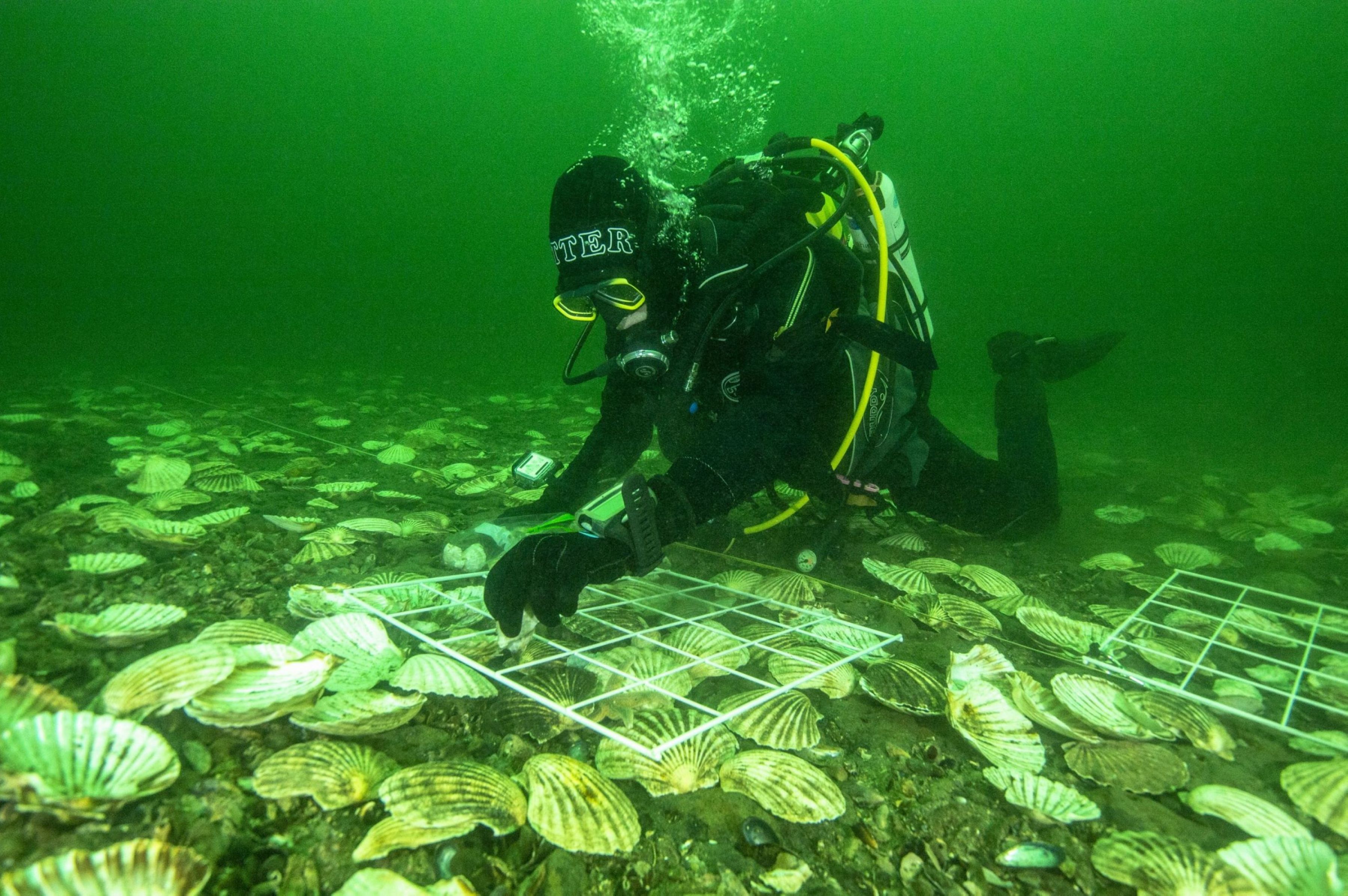 Glenmorangie’s DEEP project lead scientist Dr Bill Sanderson carefully lays Native European Oysters on the bottom of the Dornoch Firth
Established in 2014, DEEP’s research has already seen 20,000 oysters returned to the Dornoch Firth. It aims to establish a self-sustaining reef of four million oysters by 2025. Having established reefs would improve water quality and biodiversity through regaining reef-like three dimensional structures on the seafloor and act in tandem with Glenmorangie’s anaerobic digestion plant, purifying the by-products of distillation – an environmental first for a Distillery!
DEEP’s Research Director and Associate Professor of Marine Biodiversity at Heriot-Watt, Dr Bill Sanderson, is chairing the NORA conference at The Royal Society Edinburgh. He said: “This is a game-changing moment for marine conservation. NORA’s pledge to bring back oyster reefs across Europe, opens the door to widespread restoration, with untold benefits for our seas. DEEP’s ground-breaking work in the Dornoch Firth proves that it is possible to return oysters to areas in which they have become extinct.”
Glenmorangie President and CEO Tom Moradpour said: “We are incredibly proud to be pioneering DEEP’s vital environmental work with our partners, not only protecting but enhancing Glenmorangie Distillery’s environment for future generations.”
Head of the marine conservation department in Germany's Federal Conservation Agency BfN, Professor Henning von Nordheim said: “When we founded NORA in 2017 in Berlin, we gratefully realised the overwhelming support and eagerness of so many European partners to join this fascinating vision. There is a real chance to restore large areas of our over exploited marine ecosystems with native oysters, for the benefit of marine biodiversity and sea water purification all around Europe. In doing so we can learn a lot from each other at this gathering in Edinburgh.”
Scottish Government Minister for the Natural Environment Mairi Gougeon said: “The Dornoch Environmental Enhancement Project (DEEP) is a fantastic Scottish success story which will improve water quality and biodiversity in the Dornoch Firth.
“Glenmorangie, Heriot-Watt University and the Marine Conservation Society can all be incredibly proud of this pioneering partnership and I look forward to the reef, and the clear benefits it will provide, being further established in the coming years.”
Glenmorangie’s DEEP project lead scientist Dr Bill Sanderson carefully lays Native European Oysters on the bottom of the Dornoch Firth
Established in 2014, DEEP’s research has already seen 20,000 oysters returned to the Dornoch Firth. It aims to establish a self-sustaining reef of four million oysters by 2025. Having established reefs would improve water quality and biodiversity through regaining reef-like three dimensional structures on the seafloor and act in tandem with Glenmorangie’s anaerobic digestion plant, purifying the by-products of distillation – an environmental first for a Distillery!
DEEP’s Research Director and Associate Professor of Marine Biodiversity at Heriot-Watt, Dr Bill Sanderson, is chairing the NORA conference at The Royal Society Edinburgh. He said: “This is a game-changing moment for marine conservation. NORA’s pledge to bring back oyster reefs across Europe, opens the door to widespread restoration, with untold benefits for our seas. DEEP’s ground-breaking work in the Dornoch Firth proves that it is possible to return oysters to areas in which they have become extinct.”
Glenmorangie President and CEO Tom Moradpour said: “We are incredibly proud to be pioneering DEEP’s vital environmental work with our partners, not only protecting but enhancing Glenmorangie Distillery’s environment for future generations.”
Head of the marine conservation department in Germany's Federal Conservation Agency BfN, Professor Henning von Nordheim said: “When we founded NORA in 2017 in Berlin, we gratefully realised the overwhelming support and eagerness of so many European partners to join this fascinating vision. There is a real chance to restore large areas of our over exploited marine ecosystems with native oysters, for the benefit of marine biodiversity and sea water purification all around Europe. In doing so we can learn a lot from each other at this gathering in Edinburgh.”
Scottish Government Minister for the Natural Environment Mairi Gougeon said: “The Dornoch Environmental Enhancement Project (DEEP) is a fantastic Scottish success story which will improve water quality and biodiversity in the Dornoch Firth.
“Glenmorangie, Heriot-Watt University and the Marine Conservation Society can all be incredibly proud of this pioneering partnership and I look forward to the reef, and the clear benefits it will provide, being further established in the coming years.”
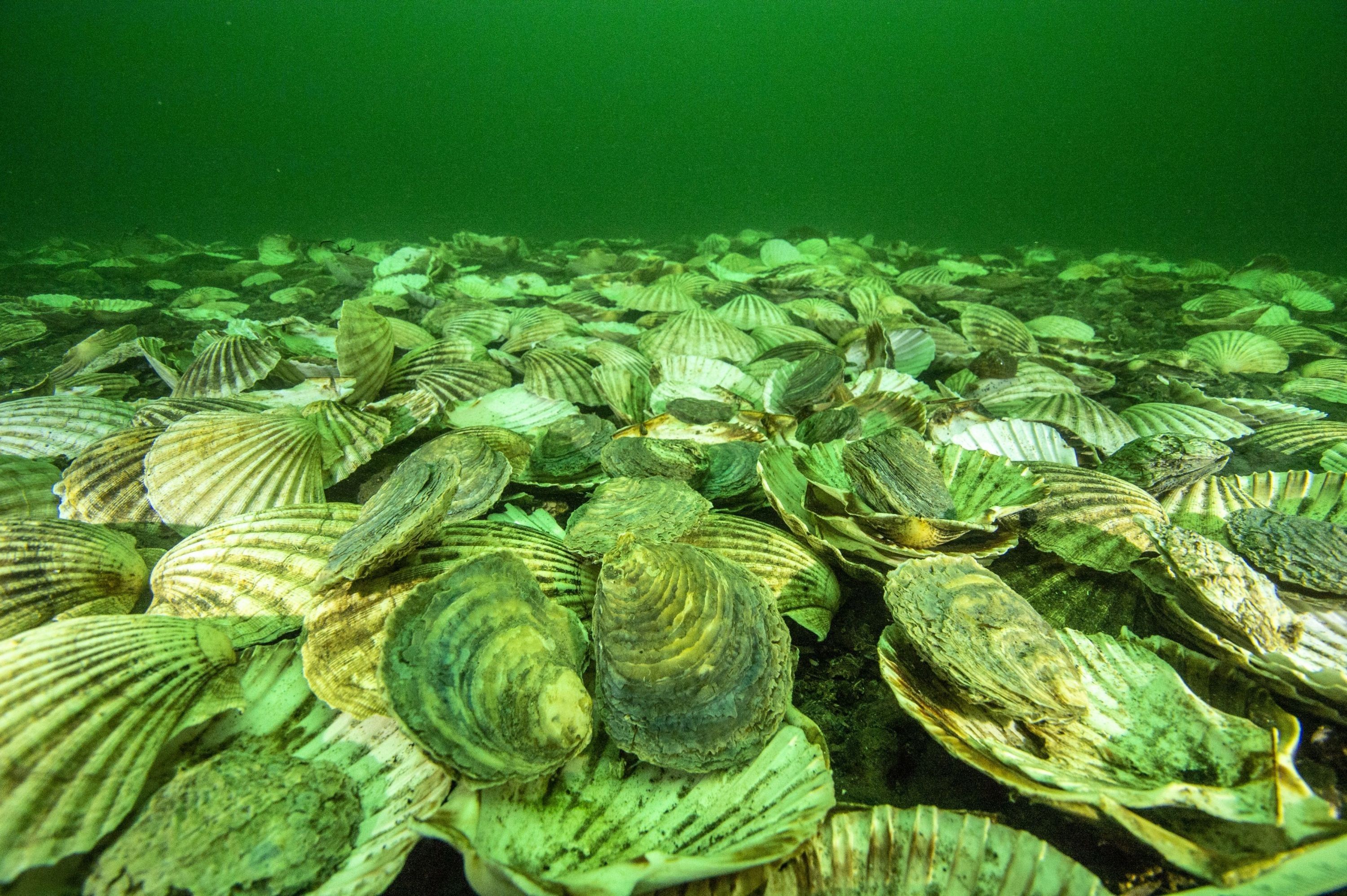 Native European Oysters settle in to their newly created home on the bottom of the Dornoch Firth
Native European Oysters settle in to their newly created home on the bottom of the Dornoch Firth
 4.7/5 with 10,000+ reviews
4.7/5 with 10,000+ reviews
